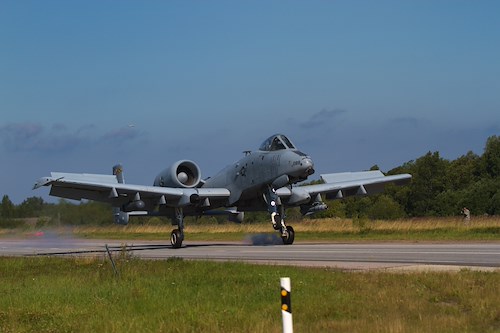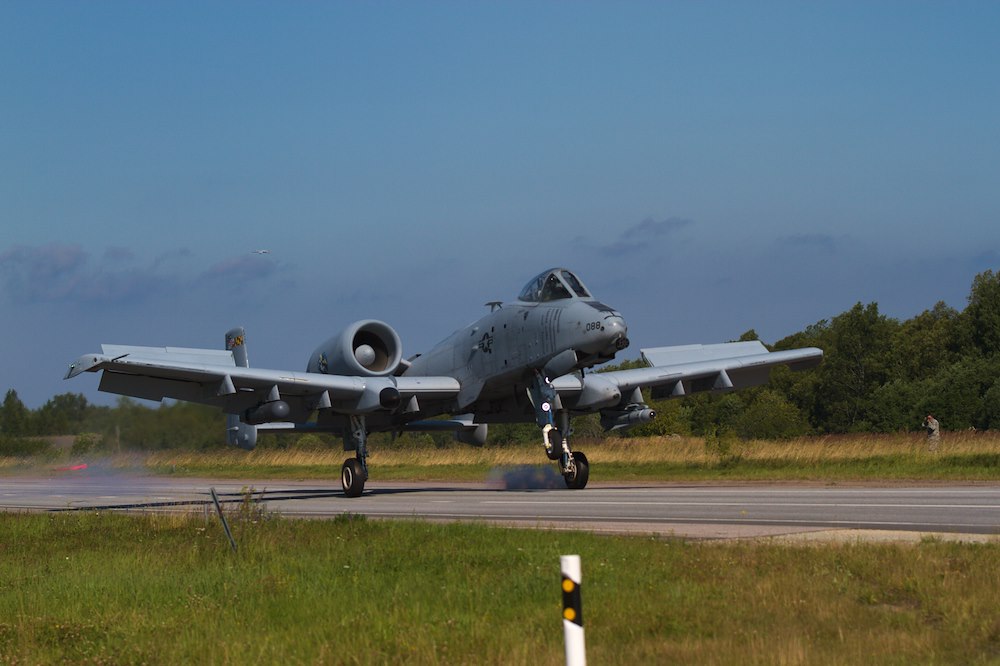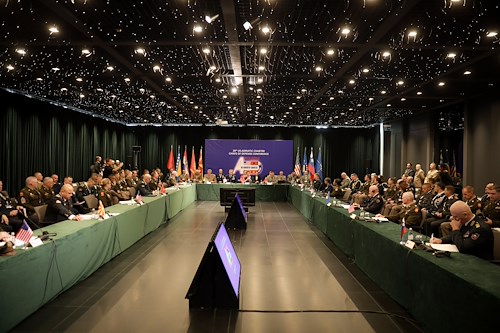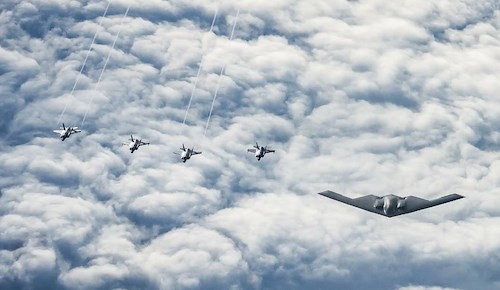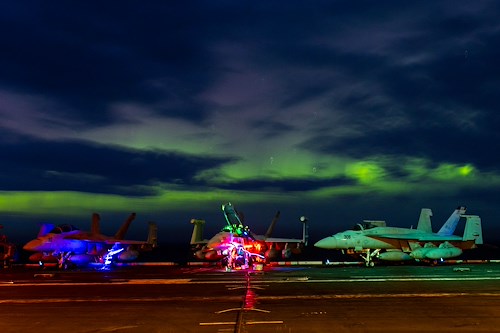Gallery contains 2 images
×
Photo 1 of 2
US Forces assist British “Rifles” in Estonia
A US Army A-10 Thunderbolt II “Warthog” belonging to the 175th Wing, Maryland Air National Guard, lands on a stretch of highway during an exercise near Jagala, Estonia on August 10, 2017. The exercise was a chance for the public to see NATO forces working together as a part of Operation Atlantic Resolve, which is a NATO mission involving the US and Europe in a combined effort to strengthen bonds of friendship and to promote peace. (Photo taken by Pfc. Nicholas Vidro, 7th Mobile Public Affairs Detachment.)
Photo by: Pfc. Nicholas Vidro
Photo 2 of 2
US Forces assist British “Rifles” in Estonia
A British Army soldier with the 5th Battalion, The Rifles, 20th Armored Brigade, returns fire during a training exercise at Saase, Estonia on August 9, 2017. The 5th Battalion, The Rifles, 20th Armored Brigade is currently working in country as a part of Operation Atlantic Resolve, a NATO mission involving the US and Allied and partnered nations in Europe in an effort to promote peace and deter aggression across the region. (Photo by Army Pfc. Nicholas Vidro, 7th Mobile Public Affairs Detachment)
Photo by: Pfc. Nicholas Vidro
US Army Soldiers of the 3rd General Support Aviation Battalion, 10th Aviation Regiment, 10th Combat Aviation Brigade, 10th Mountain Division and the 175th Wing, Maryland Air National Guard trained with NATO Allies during a combined aerial-ground exercise near Jagala, Estonia on August 10, 2017.
The exercise consisted of US CH-47 Chinooks, escorted by US UH-60L Black Hawks, dropping off infantrymen with the British Army's 5th Battalion, The Rifles, 20th Armored Brigade on their mission to secure a civilian highway. They were able to practice these specific air maneuvers the day before during a separate exercise that seized an objective and acquired a high value target at Saase Training Area, Estonia.
The 3-10 CAB is currently in country as a part of Operation Atlantic Resolve, a NATO mission involving the US and European Allies and partners in a combined effort to strengthen bonds of friendship and to deter aggression. This event was an opportunity for US, British, and Estonian soldiers, as well as local law enforcement, to come together under a unified command to successfully land A-10 Thunderbolt II “Warthog” planes in a civilian area. British Army Lt. Col. Andrew Ridland, commander of the Enhanced Forward Presence Battle Group, explained the importance of combined events like this.
“This is all about air-land integration. This exercise comes a week after Vice President Mike Pence visited Estonia and spoke about how Enhanced Forward Presence is the embodiment of NATO in many respects. What we've got today is my soldiers working with American helicopters and planes demonstrating operations with our Allies,” he said.
This marks the third time the Maryland Air National Guard has been able to complete this event successfully, thanks to the teamwork between US, British, and Estonian forces on the ground. US Army Lt. Col. Spencer Burkhalter, deputy chief of the Office of Defense Cooperation in Tallinn, Estonia, spoke on what needed to be done to make this mission viable.
“The planning took over six months to make this happen as successfully as in the past. On the Estonian side there was a lot of ground work to cover. Their military police worked with local police to close this road. On the American side, the A-10 pilots planned the flight mission. In addition to those elements, the British component provided security for the airfield in an assault exercise conducted before landing,” he said.
After the British infantrymen created a defensive perimeter around the area, the Warthogs began their descent, and after landing were assessed by a maintenance crew before taking off on the same strip. Ridland spoke on how this military display affects the public perception in Estonia.
“Here you have many people, families and the like, and for them this is an exciting thing to see. It's also a reassurance to the public that NATO is here, their country is secure, and they don't need to worry about anything,” he said.

